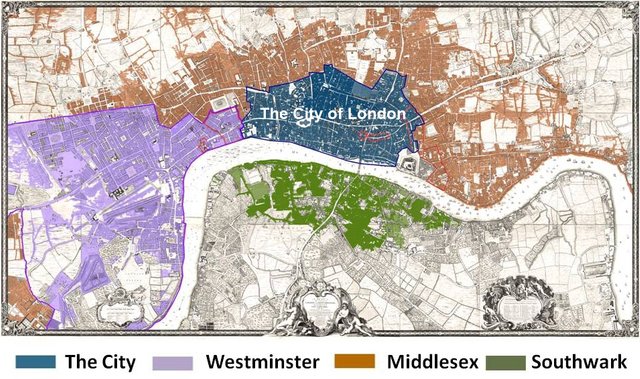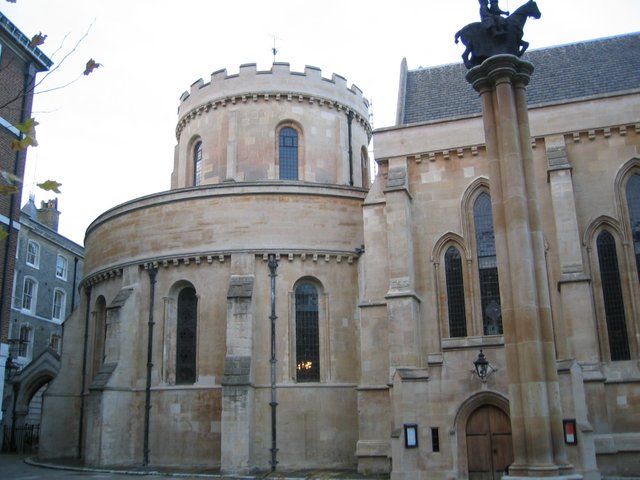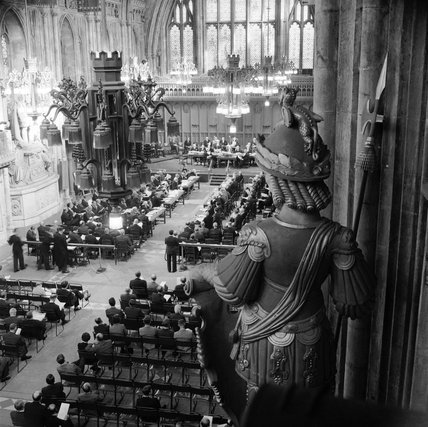Articles About History: The City Of London
The vision of those that believed in a world monopoly ruled over by BEIC became the norm, it was founded in the City Of London the financial district on British soil the epicenter of neo-feudalism and free-market crony capitalism - one of the many nodes of power existing behind the apparent scenes of politics.
The financial power of the City of London is pervasive.
- One-fifth of all the gold in the world is held in the City of London
*In 1997 The city of London held 90% of all International loans in what is called the Euromarket, this market was completely unregulated.
*It houses around 500 branch offices for foreign banks and most headquarters of British banks. It is also the location of the Bank Of England.
*Eight huge multinational corporations have their headquarters there, corporations such as, Unilever which is one of the biggest food companies in the world. BT Group a telecom company that serves in 180 countries, Lloyds Banking Group-Old Mutual and Standard Chartered are some of the biggest financial institutes in the world, Prudential which is a multinational insurance and law firm, Shroeders which is one of the biggest asset management companies in the world all have their headquarters there.
*The International Gold Exchange called St Swithins Court, where the price of gold is being set every day, by the infamous private bank N.M Rothschild.
*The International Petroleum Exchange, one of the three places where the oil price is set every day.
*The International Metal Exchange where the price of metal is being set every day and the London Stock Exchange.
*Are all located in the City of London; this fact makes the city of London the largest foreign exchange market in the world.
Think about it; not only is it a powerful banking community, but this is an institution where the actual disposition of the physical asset of the world is being traded and is being determined. Not to mention the layers upon layers of speculative financial instruments created, that are now in full collapse and threatening to bring the physical economy of the world down with it.
’’The UK does not have finance, the City of London has and it is not part of the UK. The City Of London is outside the United Kingdom, did you know that? Therefore it is not part of the EU. It could not be a part of the EU because you need democratic elections, and the city of London doesn’t. It is the banks that have the votes. It is not part of the UK because the Queen is not allowed to enter without permission. She is not the sovereign; therefore, it is not part of the UK.’’
(Professor Richard Werner interviewed by RT)

DQmfEY2MgTDVtPiDiDrBa4GSLcu7WwbcSokRsacxn48cb88/city-of-london-boundaries.jpg)
London started as a trade colony founded by the Romans in the first century AD, and after a few attempts in trying to invade the settlement by Celts, the Romans built a wall around their settlement. This wall can still be seen encircling the City of London. This area is what we refer today as the City of London, it was called Londonium throughout the dark ages, and officially it was still a part of the Roman Empire.
It remained unconquered, throughout the dark ages and after the failed attempt by William the Conqueror, it was considered to be its sovereign land. Subsequently, William the Conqueror built west minister which became the first attempt in expanding the territory of metropolitan London and or greater London. In other words, there are two counties even until this day, The City which is the financial center, and cosmopolitan London under the British crown.
Greater London grew up around the old Roman settlement, but the old trade colony or the original London maintained their sovereignty. And so it happened that The City Of London gained the first step in actual autonomy during the time of King Henry I in 1141. Being a Knights Templar, Richard the Lionheart gave the City of London further independence and built the Templar church which still is located in the City of London today. Subsequently, the Templar church became the royal treasury; this meant that the military order of the Guelph faction, the Knights Templars, ruled British finances for a hundred years, the Knights Templar even gained a seat that was held in parliament next to the king. When the Knights Templars were abolished, another military order of the Vatican, namely The Knights of Malta took over the business sector.

DQmcVgY3JGN2SzJz8Wftxw9rUHQwKfkkLer2yMCTF9PLK8R/TempleChurch-Exterior.jpg
Signed by King John II, the City Of London was also given further privileges by the Magna Carta the royal charter of 1215, Magna Carta is not the beginning of democracy it is a transference of power from the King to local Barons. Magna Carta symbolized the cementing of power for the oligarchy of Britain. It says that the king does not have absolute power like in the French system, but the feudal Barons could overrule the king. The greatest threat to society at this time was private warfare and endless wars conducted by feudal barons. It is from the Magna Carta Britain got the deeply oligarchical institution ''the house of lords'' where you can still inherit your position of power just being a part of the nobility.

Because of its autonomy, one can refer to the City of London as an enclave; in other words, a separate entity from the monarchy and the parliamentary system of England. (see sui generis) The City of London has a special relationship with the monarchy, and according to law, The Queen of England is not the Sovereign over the City of London, she needs to ask for permission when entering this place. Through the enactment of the Magna Carta and the autonomy given by Richard the Lionheart, in some ways the City Of London gained a similar status as the Vatican did in Italian political affairs.
The City of London is ruled over by a local authority called the City Corporation with its own legal base, its flag, its police force. The City Of London Corporation was created in 1141, through the permission by King Henry I to elect their own Mayor, ''the lord mayor of London.’’ Since then, the participants of one hundred eight livery companies elect The Lord Mayor of London; these livery companies such as The Honorary company of the International Bankers are secret, and you are chosen to take part of their operation by those on the inside of the guilds.

The City of London Corporation is the body of power inside the square mile; it has its local government, it is called the court of the common council, a parliamentary system elected by the banks, companies, and residents residing inside the City of London.

The City of London is made up of 25 wards; every ward elects an alderman or a council member. In these wards both business and residential can vote, around three hundred thousand people work inside the City of London every day and according to their law system, the people working for the companies are considered to be the residents living inside the City of London. And so the bigger your company is the more votes you have.
’’The members of the Court of Common Council are the elected representatives of the electors of the City's 25 wards. The city of London Members are non-party political and are drawn from a wide range of backgrounds including accountancy, banking, insurance, and law. Through their membership on committees they make, and scrutinize, the decisions necessary to make City of London policy and oversee the work of departments which provide the wide range of City of London services.’’ City.gov
Being founded over 800 years ago, City Of London Corporation has three accounts or funds:
The cities fund - which is open to the public. The city bridge - which exists to fund charity. The cities cash - which is their private account.
Highly secretive, their power has never really been challenged. It was met with some challenges around the time of King James II, who wanted to strip the City of London's privileges, but he was dethroned in 1688 after the Glorious Revolution. Following the revolution, King William III did give back all of the privileges to the City of London again.
The fact that the monarch is not the sovereign can symbolically be observed, in the so-called, ‘’ceremony of the sword’’, whenever the queen wishes to visit the City of London, she needs to be accepted and be granted permission from the Lord Mayor of London during this ritual.
The City Of London even has their own representative in the British parliament called ''the Remembrancer'' whose sole purpose is to reassure and look through every single legislation, so the privileges they have is still intact.
It is interesting indeed that one of the most powerful financial centers in the world is ruled over by a mid-evil corporation, and that it still has its own feudal government, it has never been audited, and it's beyond the reach of both parliamentary and monarchical processes.
It is one of the many nodes of power on the super-national level, a city-state where multinational corporations, private banks, and secretive organizations can express their sociopathic tendencies in secret, beyond public scrutiny.
References:
https://www.bbc.com/worklife/article/20160419-the-city-with-248-billion-beneath-its-pavement
https://web.archive.org/web/20101007062338/http://www.aviva.com/about-us/contact-us/
https://www.btplc.com/thegroup/contactbt/index.htm
https://web.archive.org/web/20090310191913/http://www.lloydsbankinggroup.com/about_us/company_contacts.asp
http://www.oldmutual.com/ir/contacts.jsp
https://web.archive.org/web/20060106183040/http://www.prudential.co.uk/prudential-plc/siteservices/directory/plccontact/
https://www.schroders.com/en/contact-us/worldwide-locations/uk/
https://www.sc.com/uk/contact-us/
https://www.unilever.com/resource/unilever-registered-offices.aspx
https://oma.eu/projects/new-court-rothschild-bank
https://www.poundsterlinglive.com/gbp-live-today/5435-london-foreign-exchange-turnover-data-2016
https://www.thisismoney.co.uk/money/markets/article-1716751/City-of-London-still-tops-finance-league.html
https://web.archive.org/web/20151105191615/http://www.zyen.com/PDF/GFC%207.pdf#page=30
https://www.cityoflondon.gov.uk/things-to-do/visit-the-city/our-history/Pages/city-history.aspx
https://www.cityoflondon.gov.uk/things-to-do/visit-the-city/our-history/Pages/timeline.aspx
http://www.templechurch.com/history-2/
https://www.cityoflondon.gov.uk/things-to-do/visit-the-city/our-history/Pages/magna-carta.aspx
https://www.cityoflondon.gov.uk/about-the-city/about-us/Pages/default.aspx
see http://democracy.cityoflondon.gov.uk/mgCommitteeDetails.aspx?ID=223
https://www.cityoflondon.gov.uk/about-the-city/history/Pages/temple-bar.aspx
https://www.legislation.gov.uk/ukla/2002/6/pdfs/ukla_20020006_en.pdf
https://www.cityoflondon.gov.uk/about-the-city/about-us/Pages/key-officers.aspx